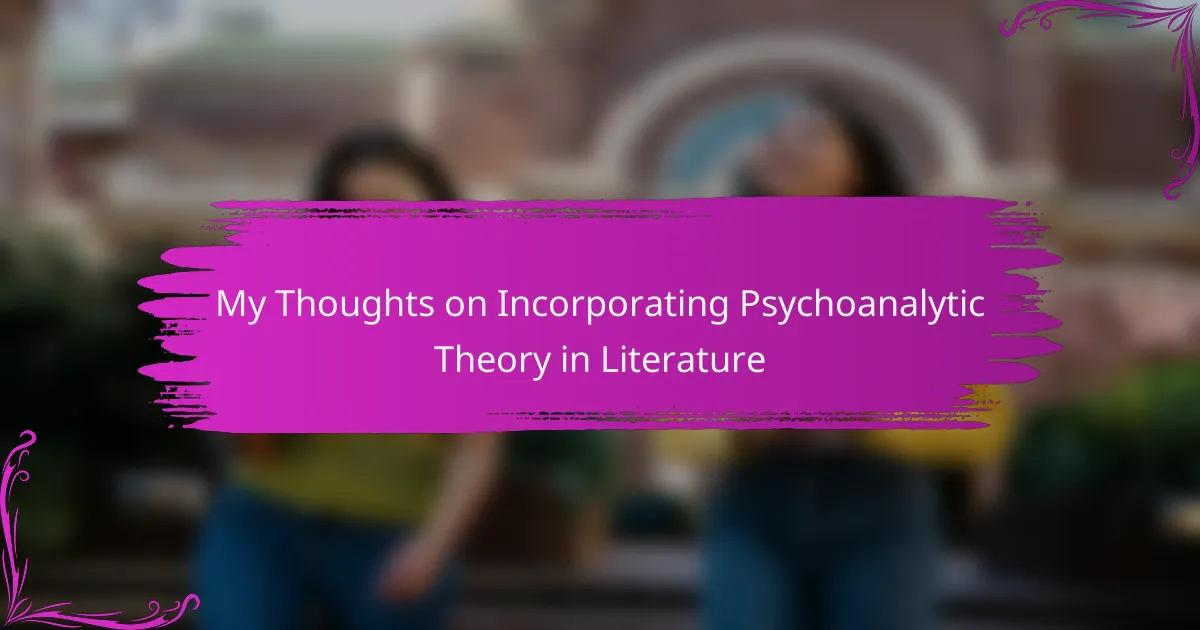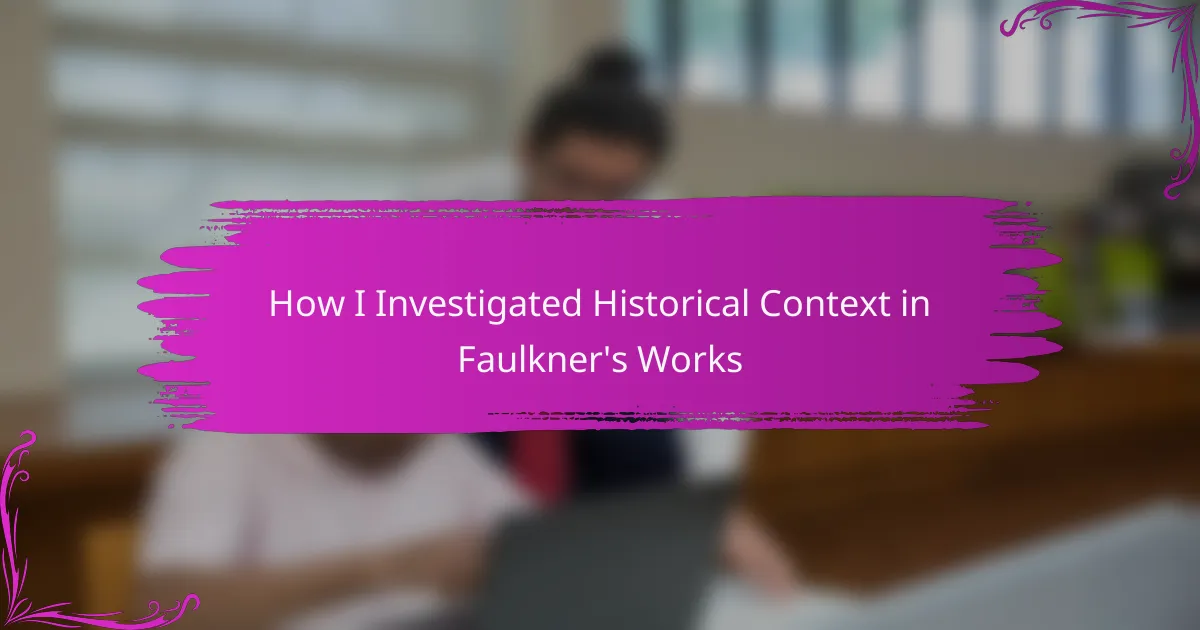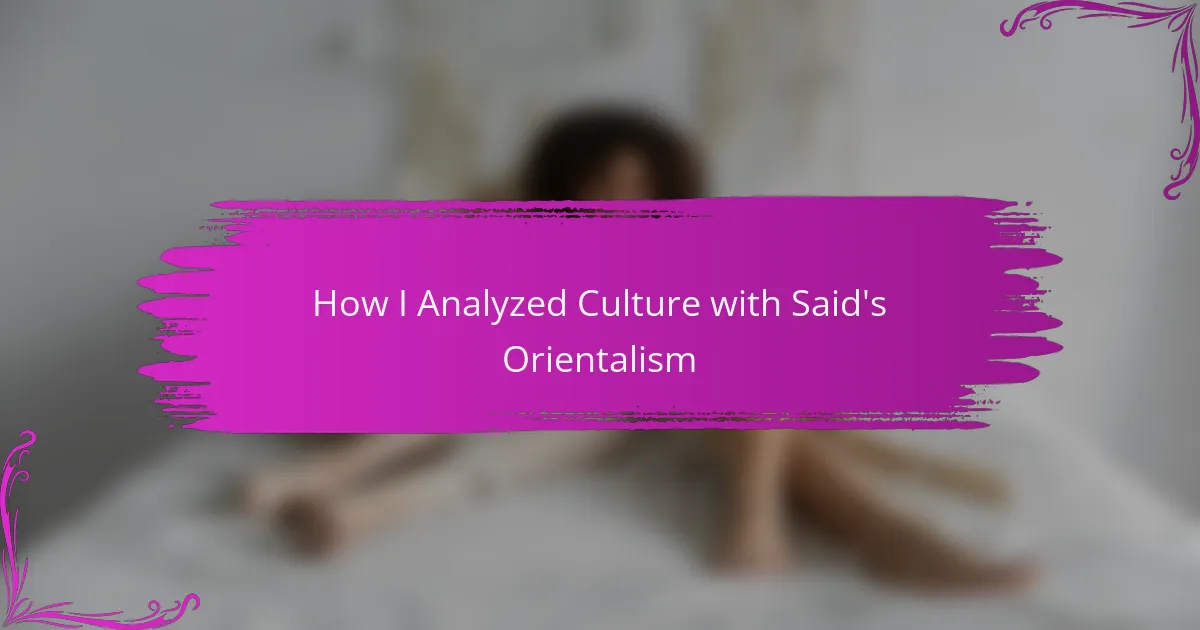Key takeaways
- Lacan’s theories, particularly the “mirror stage,” deepen our understanding of identity and desire in literature, enhancing character analysis.
- Incorporating Lacanian concepts in education fosters empathy and critical thinking, allowing students to connect personal experiences with literary texts.
- The “Real, Imaginary, and Symbolic” realms provide a framework for exploring narrative structures and character motivations, enriching literary interpretation.
- Understanding the role of “The Other” promotes meaningful classroom discussions, helping students appreciate diverse perspectives.
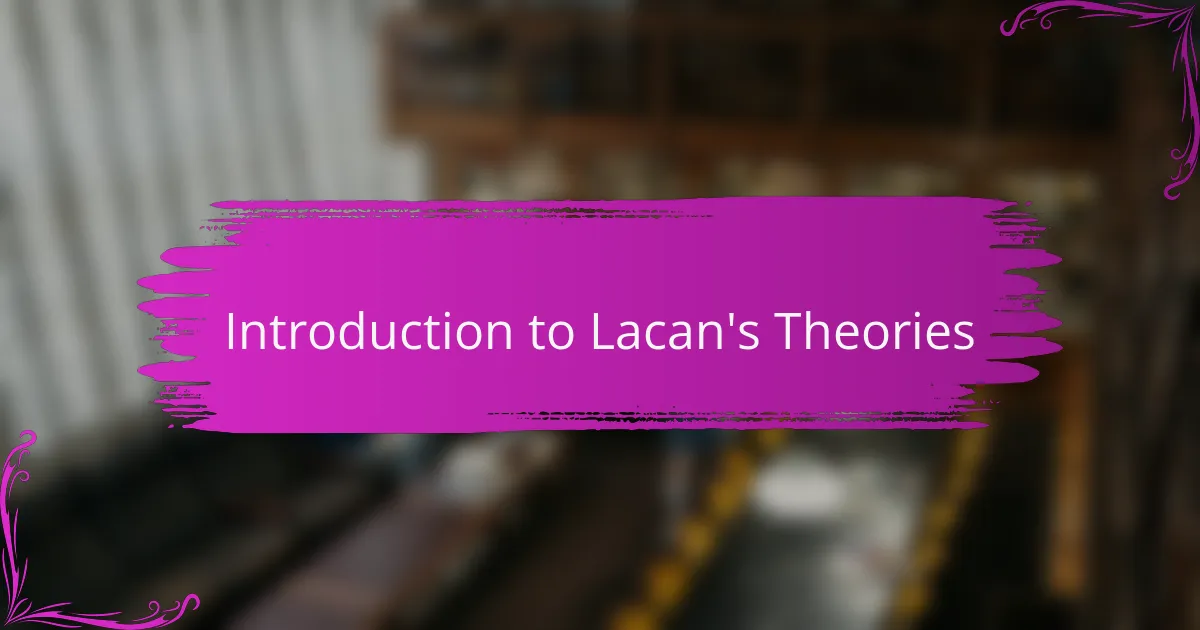
Introduction to Lacan’s Theories
Lacan’s theories present a compelling lens through which we can examine literature and human psychology. I find his concepts of the “mirror stage” and the “real, imaginary, and symbolic” realms especially fascinating. They encourage us to consider how identity and desire shape our narratives, both in real life and within the texts we study.
When I first encountered Lacan’s ideas, I was struck by how they resonate with characters’ struggles in my favorite novels. Understanding characters’ internal conflicts through Lacanian lenses can deepen our appreciation of their journeys. It makes me reflect on my own experiences with identity and desire, adding layers to my reading and writing practices.
| Lacan’s Key Concept | Description |
|---|---|
| Mirror Stage | A phase where a child recognizes their reflection, leading to the formation of the ego and identity. |
| Real | The realm of what is beyond language and representation, difficult to articulate or describe. |
| Imaginary | The domain of images and illusions, linked to deception and the construction of the self. |
| Symbolic | The order of language, laws, and societal structures that shape our reality. |

Importance of Lacan in Literature
Lacan’s contributions to literature are profound as they illuminate the intricacies of human desire and identity. His notion of the “mirror stage” resonates deeply with me, especially when I reflect on characters who grapple with their sense of self. Have you ever noticed how a character’s perception of their own identity can alter the entire narrative? It’s captivating to see how Lacan’s ideas enrich our understanding of their journeys.
When I analyze texts through Lacanian theory, I often find myself questioning the reality portrayed within the story. The distinction between the “real,” “imaginary,” and “symbolic” realms encourages a deeper look at how characters navigate their worlds. For instance, in a novel I recently read, the protagonist’s struggles epitomized the tension between these realms, compelling me to explore the underlying motivations driving their choices.
Moreover, Lacan’s theories invite us to scrutinize the structures of language and meaning that govern our experiences. I’ve come to appreciate how the symbolic realm influences not only characters but also our interpretations as readers. Encountering literature through this lens transforms reading from a passive activity into an engaging exploration of our own desires and identities. Doesn’t it feel rewarding to understand characters not just as figments of imagination but as mirrors reflecting our own complexities?

Key Concepts of Lacanian Theory
Lacan’s theories are intricate yet profoundly influential in literature. One key concept is the “mirror stage,” where a child’s realization of their own image forms the basis of identity. Personally, I find this idea fascinating because it highlights how our perception of self is often shaped by external reflections, which becomes so relevant in literary characters as they grapple with their identities.
Another essential element is the notion of the “Real, Imaginary, and Symbolic.” Each domain represents different levels of human experience, with the “Real” being what is unspeakable and outside language. This resonates with me, as many literary works explore characters struggling to articulate their deepest fears and desires.
Lastly, the concept of the “Other” explores how individuals are shaped through relationships with others, a theme that often drives conflicts in literature. It reminds me of the characters I’ve encountered, navigating their connections and the impact of those relationships on their narratives.
| Concept | Explanation |
|---|---|
| Mirror Stage | Formation of identity through the recognition of one’s image. |
| Real, Imaginary, and Symbolic | Three realms of human experience impacting desire and communication. |
| The Other | How relationships with others shape personal identity and conflict. |
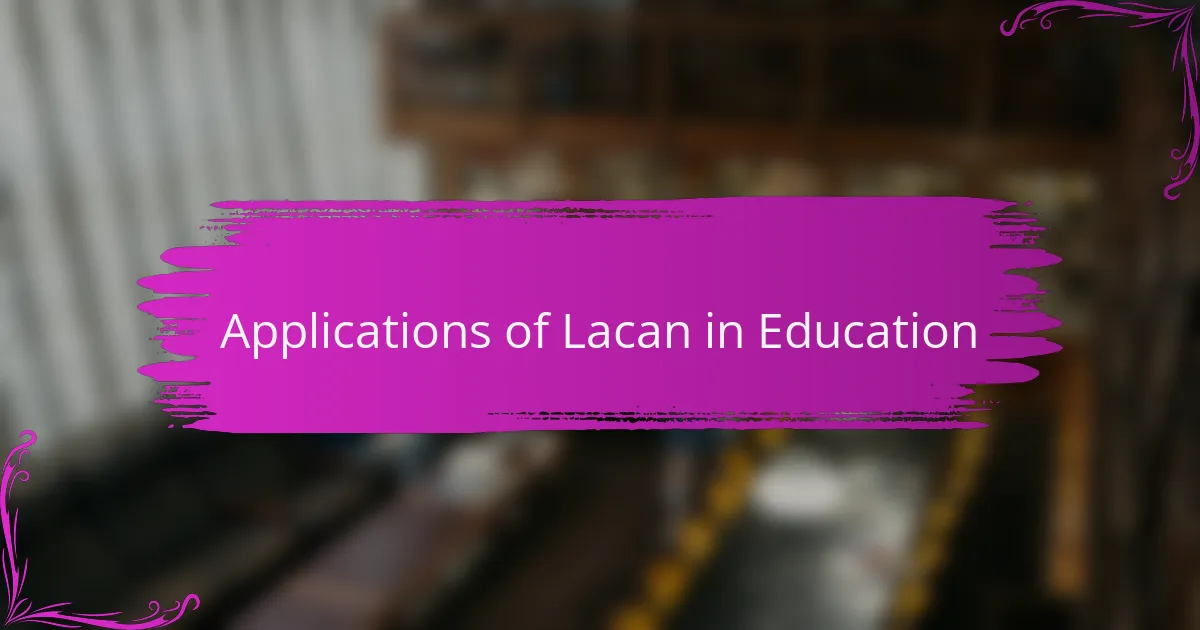
Applications of Lacan in Education
Applying Lacanian theory in education can profoundly enhance our understanding of student identity and classroom dynamics. For instance, when I reflect on the mirror stage, I realize how important it is for students to recognize themselves in the material they engage with. Have you ever watched a student light up upon seeing their own experiences mirrored in a text? It’s a powerful moment that can motivate deeper engagement and comprehension.
Incorporating Lacan’s concepts of the real, imaginary, and symbolic into lesson plans can also reshape discussions around texts. I’ve found that prompting students to explore these realms encourages them to confront not only the characters’ struggles but also their own. When they relate their personal challenges to the “Real,” they become active participants in their learning journey, opening up a dialogue that often leads to transformative insights.
Moreover, understanding the role of “The Other” within classroom conversations fosters a more empathetic learning environment. I’ve seen how discussions about different perspectives, shaped by relationships and societal contexts, help students connect more meaningfully with each other. This not only enriches their literary analysis but also cultivates essential skills in communication and critical thinking. Isn’t it fascinating how literature can be a tool for understanding ourselves and each other?

My Experiences Applying Lacan’s Theories
Exploring Lacan’s theories in my readings has been a transformative experience. I remember my first encounter with the concept of the “mirror stage” while analyzing a character’s development. It opened my eyes to how identity is formed through images and others’ perceptions, making me reflect on my own identity and how it shapes my connections with others.
In practical terms, here are some key insights I gained while applying Lacan’s theories:
- The idea of “desire” versus “need” gave me a deeper understanding of character motivations in literature.
- Analyzing dialogues through a Lacanian lens allowed me to see underlying tensions that I previously missed.
- Investigating the symbolic and imaginary realms taught me to appreciate the layers of meaning in poetry.
- Reflecting on the notion of the “Other” encouraged me to consider perspectives beyond the main narrative.

Benefits of Lacanian Insights in Literature
Lacan’s insights can greatly deepen our understanding of literature by revealing the complex interplay between language, desire, and identity. I’ve often found that when applying Lacan’s theories to a text, it becomes easier to grasp the underlying motivations of characters, paving the way for richer interpretations. For instance, I recall analyzing a character’s obsession, only to realize it stemmed from a profound lack of self-identity – a concept Lacan articulates so well through his ideas on the “mirror stage.”
Moreover, Lacan emphasizes the importance of language in shaping our reality, which invites readers to consider how narrative structures and linguistic choices affect character development. This awareness can transform a reader’s experience, allowing them to connect emotionally with the text in ways they might not have considered before. Understanding these dynamics not only enhances literary analysis but also cultivates a sense of empathy for the characters’ struggles.
| Lacanian Insight | Benefit in Literature |
|---|---|
| Desire and Lack | Enhances character motivation understanding |
| Language as Structure | Deepens narrative appreciation |
| Mirror Stage | Encourages empathy for characters |
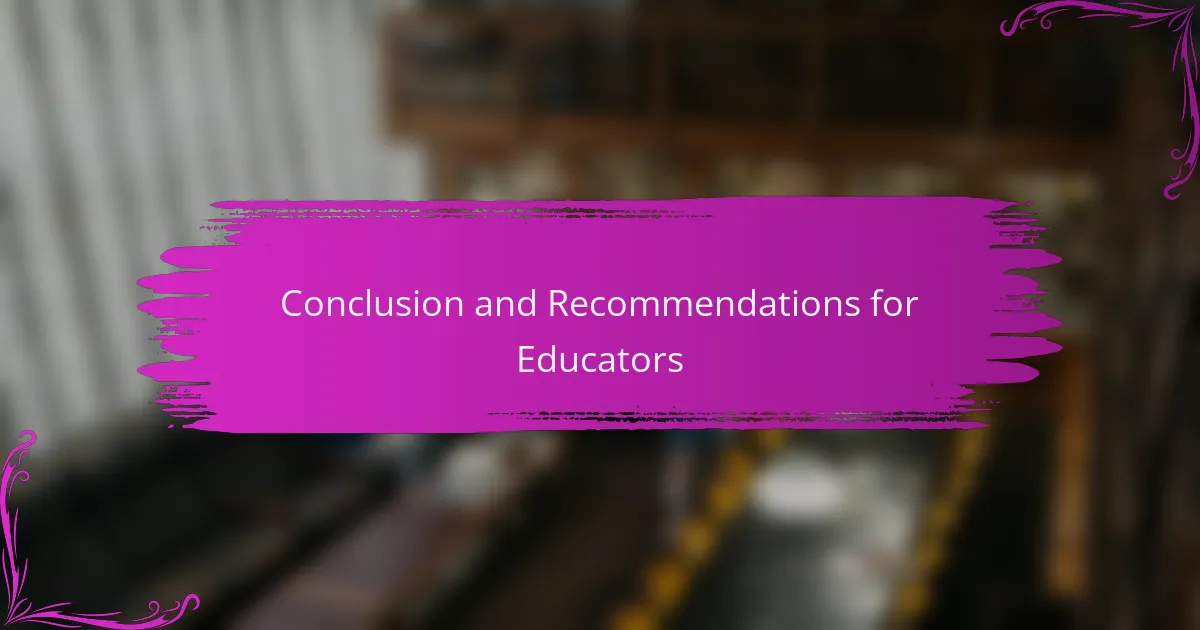
Conclusion and Recommendations for Educators
Integrating Lacanian theories into educational practices can significantly reshape how we approach literature in the classroom. I’ve seen firsthand the impact of encouraging students to reflect on their identities through texts, leading to powerful discussions about their own experiences. Have you ever noticed how a single conversation about a character’s struggle can open up pathways for students to share their personal narratives? It creates a deeper connection to the material and enriches the learning environment.
When I lead discussions that include Lacan’s realms of the real, imaginary, and symbolic, I often watch students light up with newfound insights. They begin to realize how their own challenges and desires resonate with the texts we explore. This realization transforms their engagement from passive absorption to active participation, prompting them to analyze characters and plotlines from a perspective that is deeply intertwined with their own lives.
Educators should also consider using the notion of “The Other” to promote empathy and understanding within the classroom. I’ve witnessed the shift in dynamics when students start to appreciate differing viewpoints, recognizing that their personal narratives are part of a larger conversation. This not only strengthens their analytical skills but also nurtures critical thinking and compassion. Isn’t it rewarding to facilitate such growth through literature?

